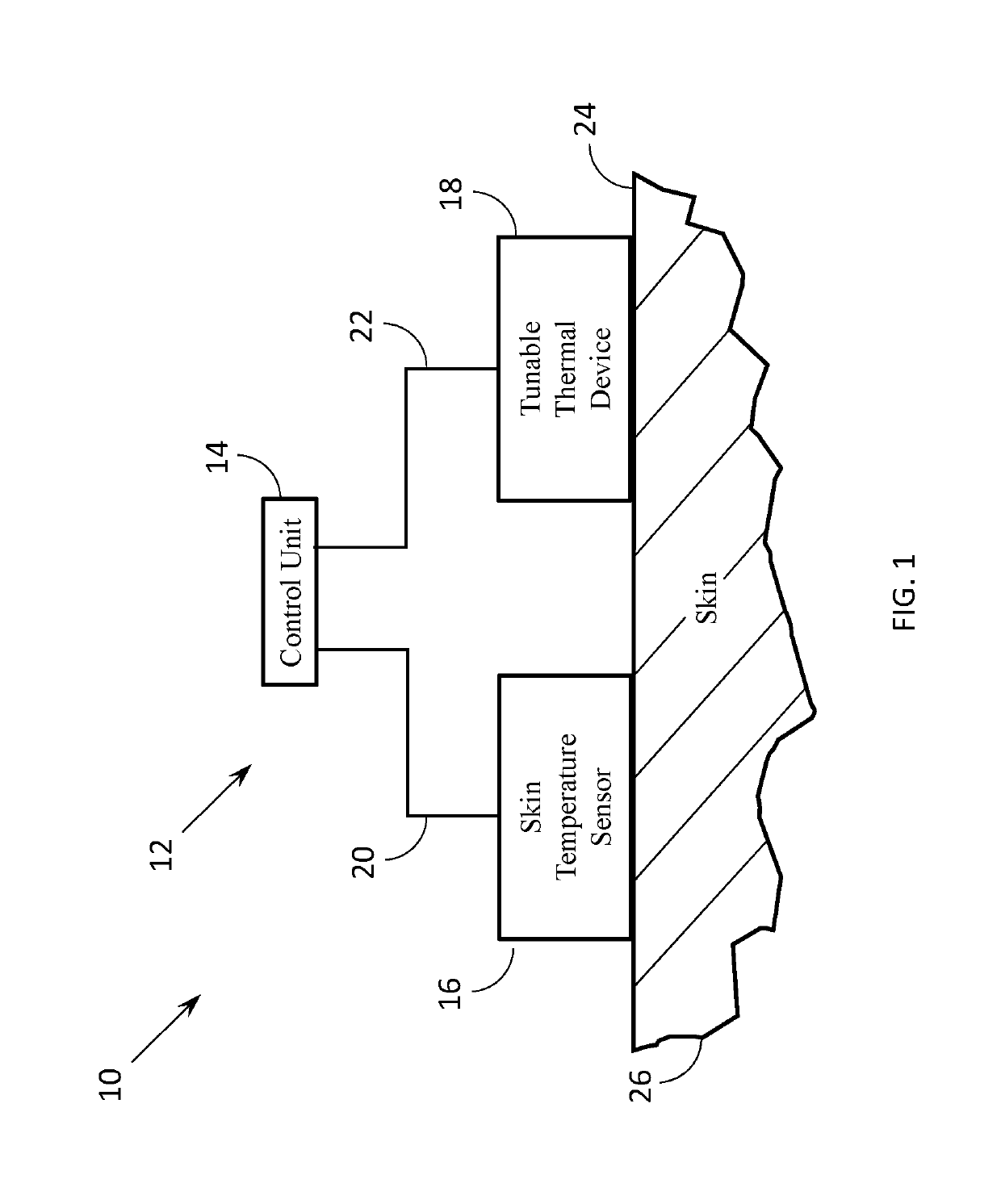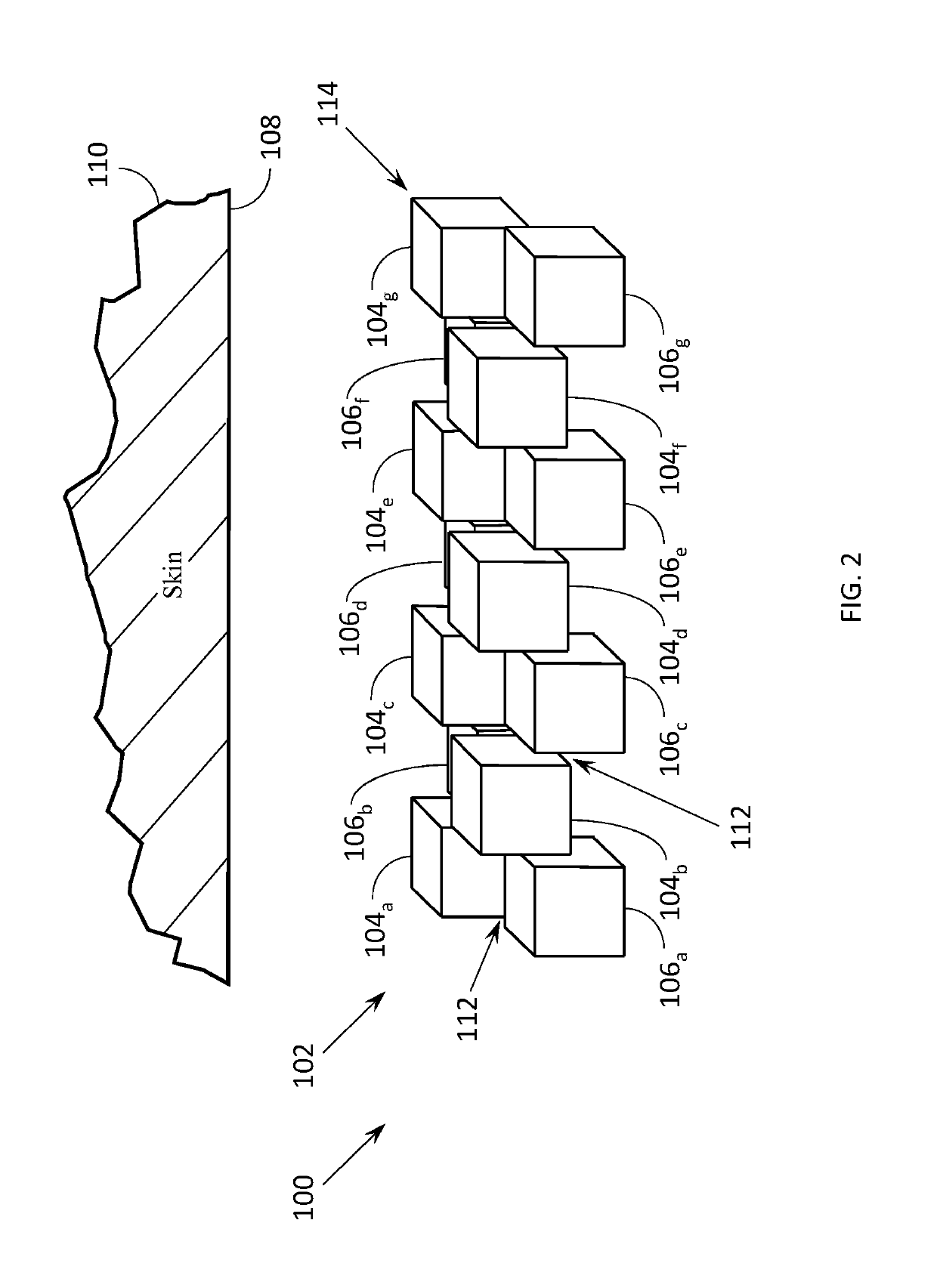Device for providing thermoreceptive haptic feedback
a technology of haptic feedback and thermoreceptive devices, applied in the field of virtual and augmented reality systems, can solve the problems of many modern virtual reality systems limited in their immersive nature, disputes over exact origins,
- Summary
- Abstract
- Description
- Claims
- Application Information
AI Technical Summary
Benefits of technology
Problems solved by technology
Method used
Image
Examples
Embodiment Construction
Definitions
[0033]As used in this specification and in the claims, the term, “haptic,” generally relates to or is based on the sense of touch, and more specifically, refers to any form of interaction between a human and a device, an apparatus, or a machine involving touch.
[0034]As used herein, the term, “thermal effusivity” refers to the rate at which a material can absorb heat.
[0035]As used herein, the term “kinesthetic feedback” describes the knowledge people have of the position of their body, and the movements they have just performed, based on feedback from their nerve endings into their central nervous system.
[0036]The term “virtual reality” refers to an artificial environment that is experienced through sensory stimuli, e.g., sight and sound, provided by a computer and in which a person's actions partially determine what happens in the environment.
[0037]The term “augmented reality,” for example, refers to an enhanced version of reality created through the use of technology tha...
PUM
| Property | Measurement | Unit |
|---|---|---|
| conduction speed | aaaaa | aaaaa |
| conduction speed | aaaaa | aaaaa |
| distance | aaaaa | aaaaa |
Abstract
Description
Claims
Application Information
 Login to View More
Login to View More - R&D
- Intellectual Property
- Life Sciences
- Materials
- Tech Scout
- Unparalleled Data Quality
- Higher Quality Content
- 60% Fewer Hallucinations
Browse by: Latest US Patents, China's latest patents, Technical Efficacy Thesaurus, Application Domain, Technology Topic, Popular Technical Reports.
© 2025 PatSnap. All rights reserved.Legal|Privacy policy|Modern Slavery Act Transparency Statement|Sitemap|About US| Contact US: help@patsnap.com



